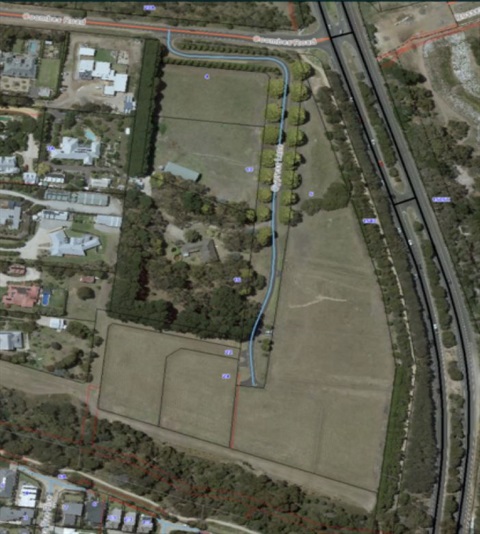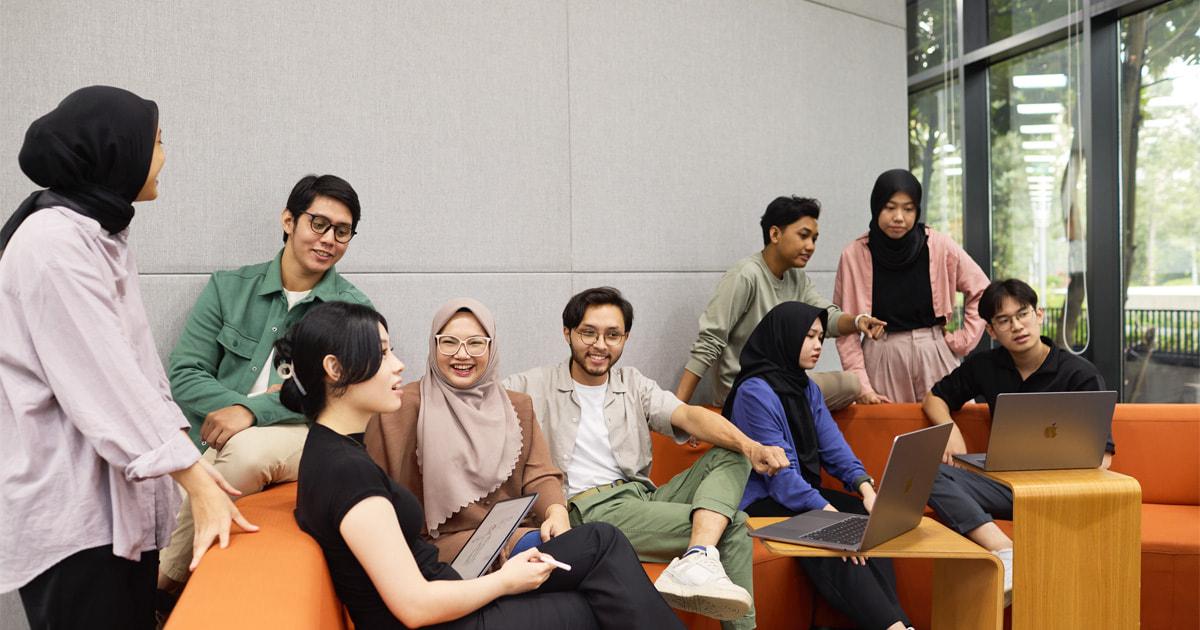
I am the daughter of an Arrente man and a Gurdanji woman.
I wish to begin by acknowledging the country and traditional owners of the land we are meeting on today.
We are meeting on Ngunnawal country.
I pay my respects to the Elders past and present; and thank them for their continuing openness to have us live, work and meet on their land.
This Indigenous practice of acknowledging your place, and the place you are on, is something that has existed for thousands of generations. It is a way of being heard. It is an exchange that ensures safety and exhibits respect whenever a person crosses into another land. This sincere reciprocity between First Nations people is a tradition we now share with all Australians in acknowledging country.
As this year’s recipient of the Sidney Sax Medal, along with the ANU College of Health and Medicine’s Bushfire Impact Working Group, I am honoured that I have been selected for inclusion in a long and impressive list of eminent leaders and agents of change in Australian health care. I congratulate my joint awardee for their well deserved recognition.
I am especially touched to be following Vicki Wade who received this award in 2019 for her many achievements.
Vicki and I share a resolute commitment to eradicating rheumatic heart disease among Aboriginal and Torres Strait Islander populations.
With respect to RHD, we cannot rest until we have achieved equity for my peoples with the outcomes in prevention and treatment already achieved for non-Indigenous populations.
By this I mean zero new cases of acute rheumatic fever. Zero new cases of RHD. And no-one dying as a result of RHD. No-one.
To Vicki and all previous Award recipients, I express my sincere appreciation for their contributions and commitment to health and wellbeing, and to a more effective, efficient and sustainable health system.
I would also like to take this opportunity to reflect a little about Dr Sidney Sax.
It was said that behind his unassuming manner lay a ‘fierce radical’.
It was this fierce but responsible radicalism that we see in Dr Sax’s legacy:
- His role in introducing the Australian Community Health Program
- His role as the first Chairman of the Hospitals and Health Services Commission during the Whitlam Government
- His leadership as the first Chairman of the NHMRC Health Research and Development Committee
- His books and many writings.
With foresight, he identified the need for strategic focus and action on:
- Health inequity
- Social determinants of health
- Regional health planning
- And the importance of navigating the ‘strife of interests’ not always rowing in the same direction for health reform.
I’d like to think that Dr Sax would be pleased to see the results of Australia’s community-controlled primary health care organisations in improving the health outcomes of their communities. In 1971, our first community-controlled Aboriginal medical service was established in Redfern. Next year, Redfern AMS will be celebrating its fiftieth birthday.
Throughout Australia, these 50 years have seen momentous changes in Aboriginal power, leadership and impact. As a country, we have had our ups and downs as we try to forge more authentic, equal and effective partnerships between Aboriginal, Torres Strait and non-Indigenous Australians.
But let me share with you today some of the reasons for my optimism.
I joined the National Aboriginal Community-Controlled Health Organisation as CEO in 2016.
Our sector has developed unique models of care, grounded in community control and cultural authority.
By adhering through these models to the principles of the original Alma Ata Declaration for comprehensive primary health care, community-controlled health services ensure that health and wellbeing are improved through collective public health action as well as individual clinical approaches.
As we all know from the Ottawa Charter of 1986, prevention is as important as treatment. Health promotion in the hands of the people themselves is more effective that the efforts of visiting experts who have little community connection or understanding. Through employment, engagement, empowerment and social action, community-controlled health services are a proven mechanism for Aboriginal people to take responsibility over their health matters.
Yet improving Aboriginal and Torres Strait Islander health and wellbeing through primary health care takes place in challenging circumstances.
Despite this, we have great news. Evidence points to the community-controlled primary health care sector as highly cost-effective when primary, secondary and tertiary prevention are integrated, and directed according to community need and prioritization.
One major study concluded that fifty percent more health gain could be achieved if health programs were delivered to Aboriginal populations via Aboriginal community control, compared to the return on investment if the same programs were delivered via mainstream primary care services.
Let me give you a few specific examples.
Our care models lead to better outcomes for Aboriginal people with chronic kidney disease as shown by Danila Dilba Health Service in Darwin.
As a baseline measure way back in 2007:
- Only 60% of patients with renal disease were being identified with this diagnosis.
- Screening of ‘at risk’ patients was very low. Although there were over 500 patients with diabetes for example, few of these had been screened for chronic renal disease.
- Only 26% of patients with chronic renal disease had clear clinical goals determining their care.
In response, Danila Dilba established a new position of Renal Case Manager in its clinic. Through this new role, all members of the primary healthcare team were supported in providing systematic patient monitoring and access to the latest advice regarding evidence-based practice applicable to specific patients.
As a learning organisation, Danila Dilba commissioned their own independent evaluation of these service changes.
Using ten-year data, this independent evaluation documented increased screening and monitoring of people under their care with Stage 3 to 5 chronic renal disease. Access to expert knowledge increased the organisation’s competence to recognise and effectively manage patients with chronic renal disease and associated comorbidities.
But it was also the case that the risk of tertiary renal services taking over the management of Aboriginal people in the latter stages of the chronic renal disease to the exclusion of their other health priorities was avoided.
While the average clinical contact with GPs of patients in Stage 3 renal disease remained relatively unchanged at about 60 per year, contact of patients in renal disease Stages 4 and 5 almost tripled.
As a result of this initiative, those patients with both renal disease and diabetes were better managed in terms of meeting agreed evidence-based targets for diabetes control. The proportion of patients meeting specific clinical targets has sat consistently above 90% since 2012.
Prior to Danila Dilba’s model of care, 50% of patients ended up with Stage 5 within two and half years of identification. In a cohort study included in the evaluation, progression slowed down dramatically. Rather than two and half years, the time it took to progress extended out to four years. This is a significant positive improvement in clinical outcomes.
Overall, this experience has shifted Danila Dilba to a ‘systems approach’. Through their multidisciplinary systems approach with support from the tertiary hospital service, Danila Dilba is preventing disease onset through effective risk factor management AND preparing people with serious renal disease and their families for prompt dialysis.
The second community-controlled example in chronic renal disease is from the Kimberley region.
There, the Kimberley Aboriginal Medical Services known as KAMS has taken a pioneering step inbecoming the first Aboriginal community controlled renal healthcare service in Australia. And quite possibly in the world. This service is known as Kimberley Renal Services (known as KRS), a wholly owned subsidiary of KAMS.
By running KRS itself, KAMS ensures a culturally appropriate dialysis service is available for Aboriginal people with chronic renal disease close to home. KAMS has capacity for more than 100 people to receive lifesaving haemodialysis treatment on country rather than being stranded in Perth. KRS has ensured a multi-disciplinary team approach is available to support people throughout their renal healthcare journey.
Access to the renal health centres is provided 6 days a week Monday to Saturday all year round. The only days that the service is not available are Sunday’s and Christmas Day. More dialysis chairs are being planned. KAMS has been a powerful advocate for the clinical services people with chronic renal disease in the Kimberley require.
There is a focus on local Aboriginal staff in each site, learning and doing and caring for their families and communities in jobs vital for the community including Aboriginal Health Workers, Patient Care Assistants, Aboriginal care co-ordinators and Aboriginal nurses. This team is supported by three “renal GPs” who are fully credentialed GPs who have deliberately added renal disease as a special area of their expertise. This is particularly important as the Kimberley region does not have a nephrologist in the region but only a FIFO visiting service.
Any way you look at renal disease in Aboriginal people, the ONLY solutions that will work in the long term are those that are Aboriginal-led, culturally responsive, located in Aboriginal organisations and evaluated through an Aboriginal lens.
Our sector has used clinical quality improvement methods for decades.
We reach out to increase health checks, health promotion and community development. Continuity of care in community-controlled services decreases rates of hospitalization. Communities direct us. Communities trust us.
Very recently, a planned transition of a remote primary health care service from government management to community control increased utilisation of primary health care by 408%. Let me repeat that. 408%.
This transition accelerated immunisation rates; reduced the proportion of babies born with low birth weights to less than 10% and increased employment of qualified Aboriginal and Torres Strait Islander people.
As a sector, we are especially proud that ACCHOs are among the largest employer of Aboriginal and Torres Strait Islanders in the country.
We are powerful advocates for action on social determinants.
Consider public housing and environmental health. The major issue of overcrowding for Aboriginal and Torres Strait Islander people largely results from the need to share housing due to lack of supply, low incomes and high rent. My people deserve affordable, adequate, safe and sustainable housing. Like yours, their health depends on it.
And of course, this became very clear during 2020’s COVID-19 pandemic.
2020 has been the year like no other. It illustrates precisely why community-controlled primary health care is so vital if Aboriginal and Torres Strait Islander peoples’ health is to improve.
We began 2020 with no inkling of what was to come.
A novel coronavirus hitched a ride rapidly around the entire globe. What we discovered VERY quickly was its propensity to strike the ageing, those with pre-existing chronic conditions and, as a contagious virus readily spread by droplet and fomite transmission, those in overcrowded housing. Chronic stress, lack of personal resources and poor nutrition through food insecurity also raised the stakes for effective public health responses.
Our sector mobilized quickly. Because we had to.
By the end of January, Apunipima in Northern Queensland was already thinking through the risk and response for Aboriginal and Torres Strait islander peoples in that region.
KAMS had also ordered PPE for all its member services throughout the Kimberley, and some remote communities were closing to all visitors.
At NACCHO, we quickly convened an internal group of CEOs of our member services and Public Health Medical Officers to get our heads around this new virus, its implications and critical issues for our people. In February, I was an early advocate with the Territory Land Councils for border closures and protective biosecurity measures to keep our communities safe.
Fortunately, government listened to us.
In early March, the Aboriginal and Torres Strait Islander Advisory Group on COVID-19 was established. NACCHO co-chairs this Advisory Group. It links to the Communicable Diseases Network of Australia and reports to the Australian Health Protection Principal Committee.
But what was just as important was that our services were on the ground. Informing communities early about the facts. Supporting communities with local pandemic planning.
Using social media, radio and local leaders to spread the word. Solving problems like soap in schools, new rules for sorry business or working out how to ensure medications got to people in quarantine, and we introduced daily health monitoring systems for anyone at high risk. We used desk-top exercises to stress-test our response plans. We shared our expertise and kept communities safe.
While we were busy implementing on the ground, we were also front-and-centre in national pandemic policy. Our sector ensured:
- Legislative changes including the Biosecurity Act to enable the necessary restrictions to be put in place quickly.
- National Aboriginal and Torres Strait Islander public health guidelines including evacuation criteria, standards for isolation and quarantine, social support, clinical care and community-wide COVID-19 screening
- Immediate Telehealth uptake that kept people well
- Rapid PCR testing in over 80 remote communities
- Workforce surge capacity planning and infectious disease modelling.
This was a fantastic effort and it worked.
As at 22 November, there have been only 147 confirmed cases of COVID-19 notified in Aboriginal and Torres Strait Islander people since the beginning of the epidemic. This represent 0.5% of all confirmed cases. And only one case in remote Australia. And there have been NO deaths from COVID-19 among Aboriginal and Torres Strait Islander people. This means we have lost NOT ONE Elder to COVID-19.
Due to coding gaps, we are yet to fully quantify the extent of testing among Aboriginal and Torres Strait Islander populations but Point-Of-Care Testing options have certainly increased access and trust.
We continue to be vigilant. Border openings increase risk. The median age for cases amongst our people is 31 years of age which is quite a bit lower than for non-Indigenous populations. The extent of co-morbidities, overcrowding and socio-economic disadvantage is always a concern.
As Dr Mark Wenitong has explained, any ‘vulnerability’ of our remote communities to COVID is much more related to longstanding under-investment in health infrastructure than to our people as individuals.
It is this health infrastructure that is my priority now.
I was pleased the Minister for Health announced a more sustainable funding model for the community-controlled primary health care sector at our NACHO conference in November 2019.
While VERY welcome and a major step forward, it is only a first step.
In conjunction with the Commonwealth Department, we are now harnessing the expertise of the sector to define the core services and outcomes of comprehensive community-controlled primary health care.
This work will culminate in an agreed Core Services and Outcomes Framework mid-next year. This Framework will explain the breadth and impact from what community-controlled health services do. It will describe the full scope of services essential to improving our health.
This Framework will also articulate the accountability we have to communities. This is a very powerful motivator for our sector. And we are bound to the bedrock of culture that informs everything we do.
This Framework will also form the basis of a needs-based funding model for community-controlled primary health care. This is seminal work, driven by the sector. Controlled by the sector. Owned by the sector.
NACCHO’s leadership has also been very evident in Closing the Gap refresh.
I’d like to spend just a few final minutes sharing with you how this came about.
Many of you will recall the original Closing the Gap arrangements that had been announced in 2008. Annual reports were tabled in Parliament. There was always a speech by the Prime Minister and a right of reply by the Leader of the Opposition.
Yet the disappointing outcomes from year to year were readily predictable. First Nations peoples had been excluded from the original concept, negotiations and policies.
By 2017 it was clear that the hopes for Closing the Gap had not been realized. It was also clear that goals and targets are useless without structural reform …. And clear that governments needed to stop talking to each other and start listening to us.
I was very perturbed. My fellow First Nations leaders were also worried.
We had to step in and rescue the process.
NACCHO was instrumental in galvanizing a cohesive group of Aboriginal and Torres Strait Islander community-controlled peak organisations to do exactly this.
Our Coalition of Peaks negotiated two vitally important Agreements, committing governments to change the way they work with Aboriginal and Torres Strait Islander peoples.
The first is the Partnership Agreement on Closing the Gap, which commenced in March 2019, and cements the partnership agreed to by the Council of Australian Governments (as it was then).
This is a formal COAG partnership with Aboriginal and Torres Strait Islander community-controlled representatives to share decision-making on Closing the Gap.
The subsequent National Agreement on Closing the Gap was negotiated under this Partnership Agreement. It was launched on 27 July this year by the Prime Minister, the Minister for Indigenous Australians and me.
It binds us all to four priority reforms. These are:
- Ensuring Aboriginal and Torres Strait Islander own governance and decision-making structures are supported.
- Recognising community-controlled organisations are an act of self-determination where Aboriginal and Torres Strait Islander people deliver services to their communities based on our own needs, cultures and relationship to land.
- Confronting institutionalised racism in government mainstream institutions and agencies.
- Sharing data and information with Aboriginal and Torres Strait Islander people to ensure Aboriginal and Torres Strait Islander people have more power to determine their own development.
It is because of our experience in leading the Aboriginal and Torres Strait Islander response to COVID that the nation has signed up to further strengthen the community-controlled sector. We commit to co-design, implementation on the ground, accountability.
In health, this will be a major feature in the revision of the National Aboriginal and Torres Strait Islander Health Plan. It will drive sector strengthening plans and true accountability across all parties for health improvement.
It is an exciting time!
We know control, self-determination and community empowerment directed by First Nations peoples will work. Nothing else will deliver the outcomes we deserve.
Please join me moving forward.
Thank you for this award which I accept as an expression of your confidence in our sector, and I share this with all of them in our efforts to prevent COVID-19 having a devastating impact on our people.







